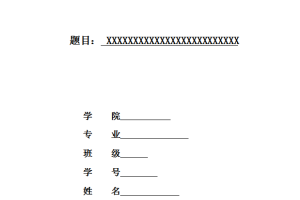摘 要
传统物品信息管理主要采取的是人工记录和手动黏贴便签的方式,在传统的物品信息管理模式下,一旦出现了记录错误或标签文字信息丢失的情况,就会造成物品信息的混乱和丢失。因此,本课题设计了基于RFID的智能物品信息管理系统,旨在提高物品信息管理的效率性和安全性。本文主要分析了基于RFID智能物品信息管理系统的组成要件,如读卡器、下位机软件开发、LCD液晶显示等;运用labVIEW上位机分析了RFID卡的注册和注销;文中给出了设计系统的电路原理图、软件设计程序图、流程图等。着重分析了Arduino单片机和RFID-RC522高频读卡器频模块的连接电路;单片机最小系统等。对RFID系统分析设计出一个简易模拟实物系统,能够实现对于已经注册过的射频卡,通过读卡器读取卡片携带的信息,并通过显示屏将读取到的信息读取出来。
关键词:物品信息管理系统 无源电子标签 labVIEW Arduino
management information system based on passive electronic tag
Abstract
Traditional items information management is mainly taken by manual recording and manual sticky note way, in the traditional item information management mode, once there is a record error or label text information is lost, it will cause the goods information confusion and loss. Therefore, this paper designs an intelligent information management system based on RFID, which aims to improve the efficiency and security of item information management. This paper mainly analyzes the components of information management system based on RFID intelligent items, such as card reader, lower computer software development, LCD liquid crystal display, etc .; using labVIEW PC analysis of RFID card registration and cancellation; the paper gives the design of the system Circuit schematics, software design program diagram, flow chart and so on. Focusing on the Arduino microcontroller and RFID-RC522 high-frequency card reader frequency module connection circuit; single-chip minimum system.The analysis and design of a simple simulation system of RFID system, can be achieved for RF has been registered card through the card reader card carrying information, and through the display will read the information read out.
Key words: baggage sorting system passive electronic tag labVIEW Arduino
目 录
1.1 物品信息管理系统的背景………………………………… 1
2.1 物品信息管理系统概述…………………………………. 3
2.1.2 物品信息管理系统功能………………………….. 3
2.1.3 物品信息管理系统的优越性………………………. 3
2.2 本论文拟解决的关键问题与解决方法………………………. 4
3.1 Arduino主控电路………………………………………. 5
4.1 下位机软件设计与实现…………………………………. 10
4.1.2 读写卡过程及程序设计………………………….. 12
4.2 上位机软件设计与实现………………………………… 17
4.2.1 labVIEW串口通信VI…………………………… 18
4.2.3 注册、注销原理……………………………….. 20
5.2.2 串口通信模块的调试……………………………. 21





